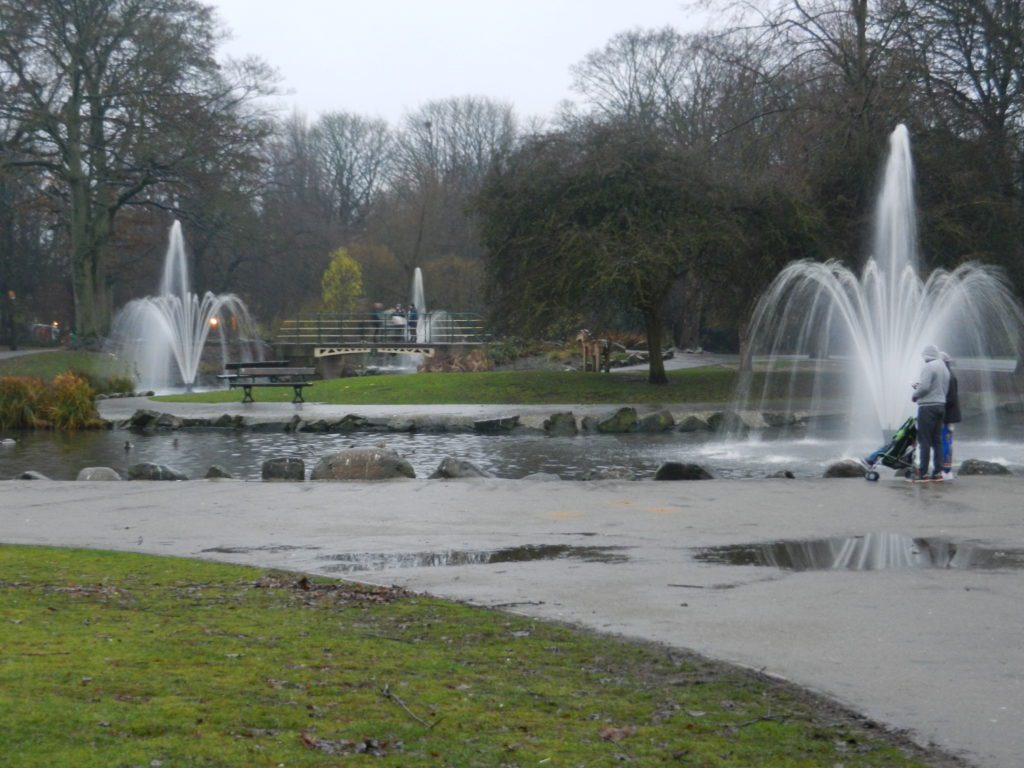
The photo above shows the tree fountains in Pearson Park, Hull last winter. The one on the right is now out of action owing to vandalism.
The naming of newly created municipal parks around Britain in the 19th century followed the three eras of Victoria’s reign. From 1819 to the early 1860s Victoria was actively performing royal duties, was sometimes in the public domain and was bringing-up her young family. From the early 1860s to the 1880s she indulged in a prolonged period of mourning and withdrew from public life. The last decades of her life saw some return to public life. Up to the 1860s many newly created public parks were named ‘Victoria’ in her honour, some even being renamed Victoria having originally been given the generic name ‘People’s Park’. This tailed-off, but the name again became popular in the 1880s and ’90s, decades which saw the most prolific era of municipal park creation (this including East and West Parks in Kingston upon Hull).
Travis Elborough in his book ‘A Walk in the Park’ (London, 2016) states that ‘The reason for this park building drive (1880s) lay in the economy which was near collapse’ (p.151). He goes on to focus on Hull where, ‘The East Park, like so many other public works in the period, was a project intended to go some way to confronting the economic issues, providing employment for idle hands, with its construction predominantly undertaken by local jobless men’. This is confirmed in detail by the minutes of the relevant Corporation committee minutes held at Hull History Centre, these related to a national system whereby a council would undertake public works using mostly unemployed labourers if the central government agreed to refund the wages given to these workers.
Elborough seems to have been fascinated by the ‘Khyber Pass’ in East Park.
(to be continued)